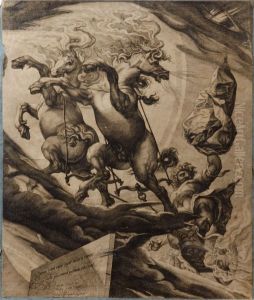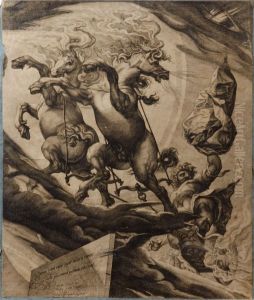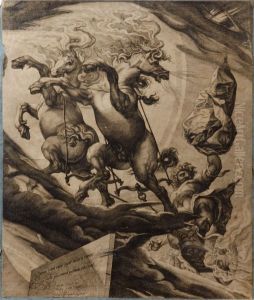Mattheus Greuter Paintings
Mattheus Greuter, sometimes spelled Matthäus Greuter or Matthaeus Greuter, was a German-born engraver, printmaker, and mapmaker, who spent much of his career in Italy, notably in Rome. Born in Strasbourg in 1566, Greuter moved to Rome around the late 1580s or early 1590s, where he became part of the vibrant art scene of the city during the late Renaissance and early Baroque periods.
Greuter quickly established himself as a skilled craftsman in the art of engraving, working with prominent artists of the time. His work primarily consisted of engravings, maps, and scientific illustrations. He was known for his precise technique and the high quality of his prints, which often involved elaborate and detailed representations of geographical areas as well as celestial charts.
In Rome, Greuter became associated with notable figures such as Christoph Clavius, a Jesuit mathematician and astronomer, for whom he produced illustrations. He also collaborated with the painter and architect Giovanni Battista Falda, engraving some of Falda’s famous views of Rome. These engravings were highly sought after by tourists and collectors during the time and contributed to Greuter’s reputation and success.
His body of work reflects a wide range of subjects, including religious themes, portraits, allegories, and decorative pieces. Greuter’s maps are particularly notable for their combination of artistic beauty and technical accuracy, and they were influential in the development of cartography in Europe.
Mattheus Greuter's contributions to the arts were recognized during his lifetime, and his works continue to be of interest to collectors and historians. He died in Rome in 1638, leaving behind a legacy of craftsmanship that bridged the Northern European engraving tradition with the flourishing artistic environment of Italy.


